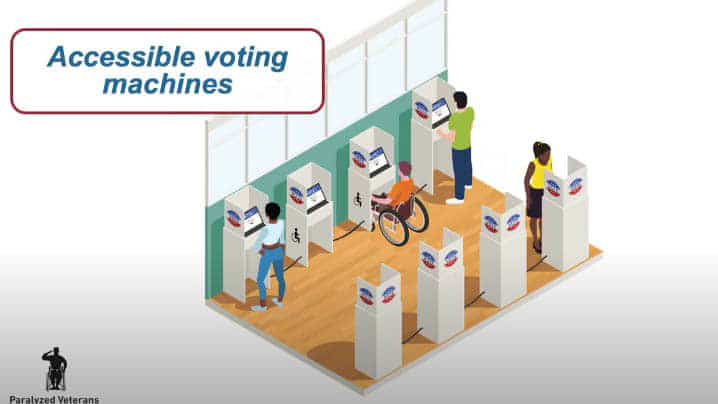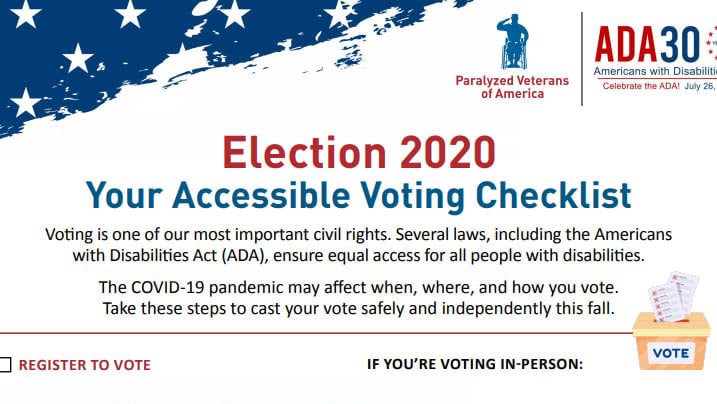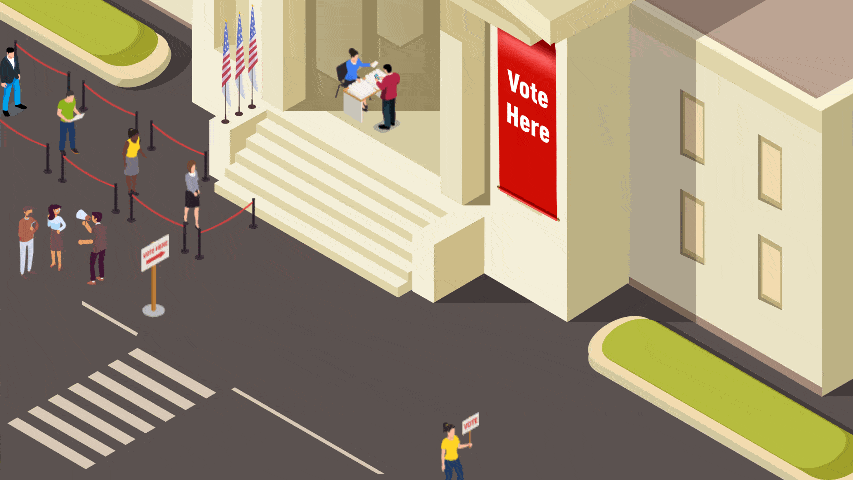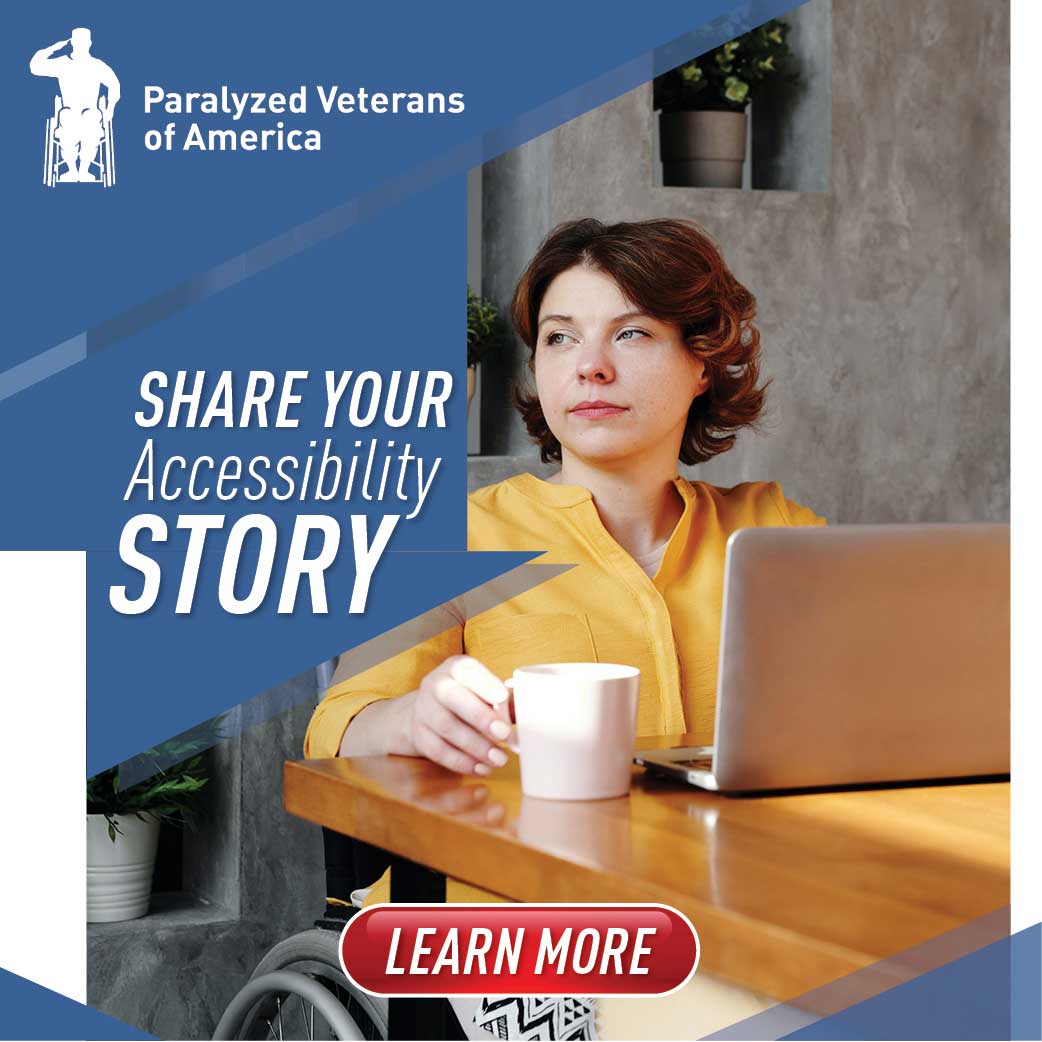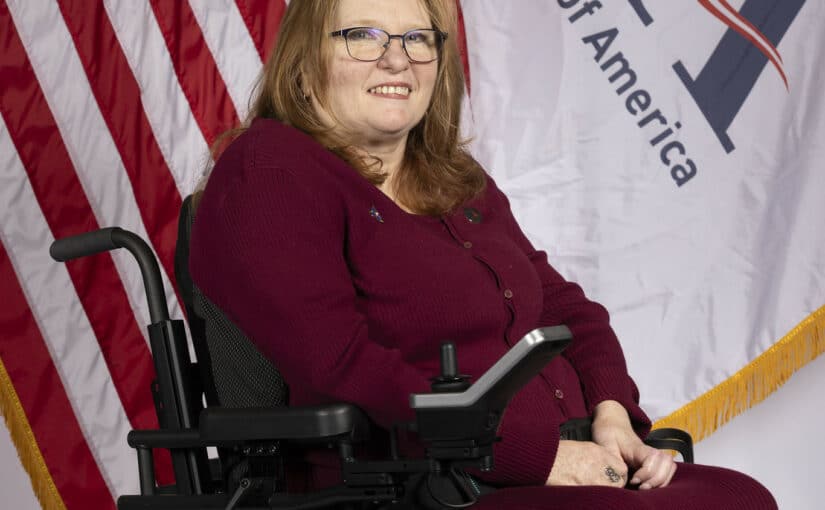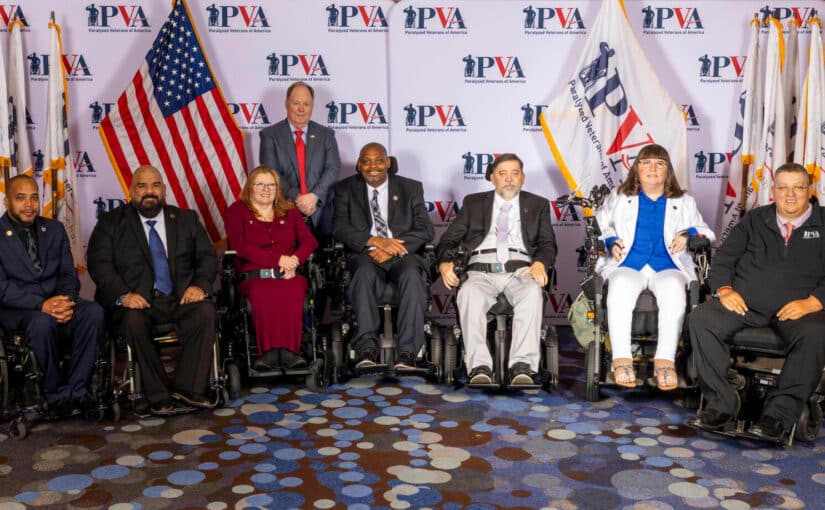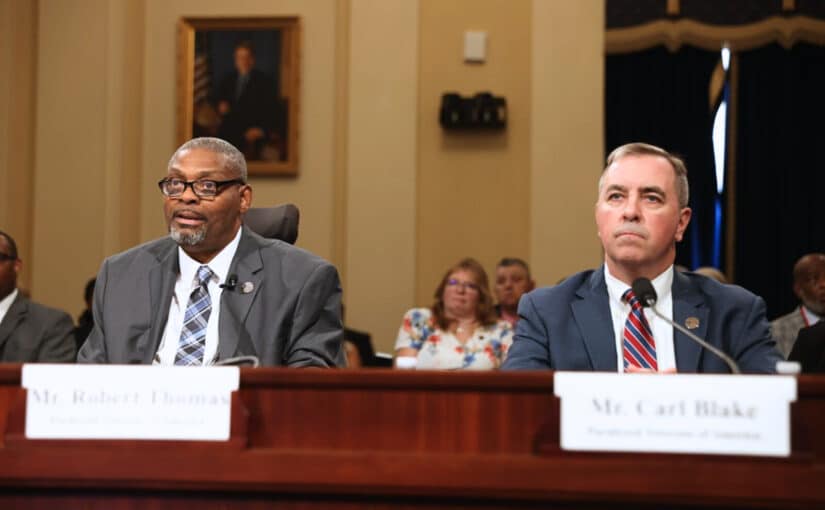
Put your voting plan in place
Voting is one of our most important civil rights, but paralyzed Veterans and other people living with disabilities are faced with accessibility challenges. Paralyzed Veterans of America wants to ensure you have all the information you need to cast your vote safely and securely by helping you make your voting access plan.
Now more than ever, it is important that Veterans and all people living with disabilities are electing state, local and national officials that represent issues that are important to the disability and Veteran communities. Your vote counts and is important.
Understand your state’s laws and the voting options available to you by reviewing the chart below and clicking through to your state voting website. Each state has different voting methods available to residents. Be sure to check the deadline for each voting method and plan ahead.
There are 40 states that have enacted early voting for the presidential election. The chart below includes information on the time and deadlines for which early voting begins from state to state.
This page provides a state-by-state comparison of policies on early voting options. Voters should check with their local elections office or district clerk to find specific days and times that polling places are open since there may be fewer locations offered in some states this year. If you choose to vote in person, you may find your polling location by inputting your zip code or address. This information can be found through state websites linked below.
STEP 1: Determine your consideration factors:
- Dexterity
- Stamina
- Vision
- Hearing
- Accessibility
STEP 2: Understand voting options available to you in your state:
- Mail-in absentee voting
- Early voting
- Electronic voting
- In-Person voting
STEP 3: Make your plan:
- Make sure you are registered to vote
- Understand deadlines for your preferred voting method
- Complete all requested documentation
- Do a trial run! If casting a ballot in person, visit your voting location to confirm accessibility
- Contact your individual polling place to confirm processes that will be in place and accessibility needs
- Adhere to deadlines and don’t wait
Voting Accessibility Resources
Check back often as we continue to update the Resource Center with important news and information on accessible voting for the 2023 election and beyond.
Early Voting Dates in Your State
State/Territory | Early Voting Begins | Early Voting Ends |
|---|---|---|
Alaska | Fifteen days before election | Day of election |
Arizona | Twenty-seven days before election | Friday before election |
Arkansas | Fifteen days before election | 5 p.m. Monday before election |
California | Twenty-nine days before election | Day of election |
Colorado | Voter service and polling centers must be open 15 days before an election. | Day of election |
Connecticut | Fifteen days before election | Two days before election |
Delaware | At least 10 days before an election | Sunday before election |
District of Columbia | Twelve days before election | Saturday before election |
Florida | Ten days before election | Three days before election |
Georgia | Fourth Monday prior to a primary or election; as soon as possible prior to a runoff | Friday immediately prior to a primary, election or runoff |
Guam | Thirty days before election | Five days before election |
Hawaii | Ten business days prior to Election Day | 7 p.m. on Election Day |
Idaho | Third Monday before election (in-person absentee) | 5 p.m., Friday before election |
Illinois | Fortieth day before election for temporary polling locations and 15th day before election for permanent locations | End of the day before election day |
Indiana | Twenty-eight days before election (in-person absentee) | Noon, day before election |
Iowa | Twenty days before election (in-person absentee) | 5 p.m., day before election |
Kansas | Twenty days before election or Tuesday before election (varies by county) | Noon, day before election |
Kentucky | Thursday before election. | Saturday before election. |
Louisiana | Fourteen days before election | Seven days before election |
Maine | In-person absentee voting available as soon as absentee ballots are ready | Three business days before election, unless the voter has an acceptable excuse |
Maryland | On the second Thursday before an election | Thursday before an election |
Massachusetts | Seventeen days before election for state biennial elections; 10 days before election for presidential or state primaries. | Four days before an election |
Michigan | Nine days before an election | Sunday before an election |
Minnesota | Forty-six days before election (in-person absentee) | 5 p.m. the day before election |
Missouri | The second Tuesday before an election | Not specified |
Montana | Thirty days before election (in-person absentee) | Day before election |
Nebraska | Thirty days before each election | Election Day |
Nevada | Third Saturday preceding election | Friday before election |
New Jersey | Ten days before the election, but in-person absentee voting begins forty-five days before the election | Sunday before election |
New Mexico | Twenty-eight days before an election at a clerk's office; on the third Saturday before an election for alternate locations | Saturday before election |
New York | Tenth day before election | Second day before an election |
North Carolina | Third Thursday before election | 3 p.m. on the last Saturday before election |
North Dakota | Fifteen days before election | Day before election |
Ohio | Twenty-nine days before election (in-person absentee) | 2 p.m. Monday before election |
Oklahoma | Wednesday preceding an election (in-person absentee) | 2 p.m. on the Saturday before election |
Oregon | Drop sites must open the Friday before an election, but may open as soon as ballots are available (18 days before). | Day of election |
Pennsylvania | Fifty days before election (in-person absentee) | 5 p.m. first Tuesday prior to day of election |
Puerto Rico | Not specified | On or before election day |
Rhode Island | Twenty days before election (in-person absentee) | Day before election |
South Carolina | Two weeks before Election Day | Day before election |
South Dakota | Forty-six days before election (in-person absentee) | 5 p.m. the day before the election |
Tennessee | Twenty days before election | Five days before election (seven days for a presidential preference primary) |
Texas | Seventeen days before election | Four days prior to election |
Utah | Fourteen days before election Note: Utah conducts elections primarily by mail. | Friday before election, though an election official may choose to extend the early voting period to the day before the election |
Vermont | Forty-five days before election | 5 p.m. day before election |
U.S. Virgin Islands | Fourteen days before an election | Three days before an election |
Virginia | Forty-five days before election | 5 p.m. Saturday before election |
Washington | Eighteen days before an election | 8 p.m. on day of election. |
West Virginia | Thirteen days before election | Three days before election |
Wisconsin | Fourteen days preceding the election (in-person absentee) | Sunday preceding the election |
Wyoming | Forty days before election (in-person absentee) | Day before election |
Contents of this page have been adapted from the National Conference of State Legislatures webpage on State Laws Governing Early Voting.

